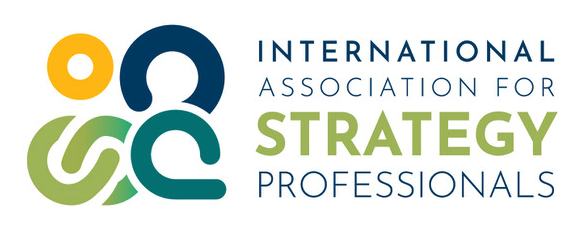By Julie Barlow
As the world’s #2 carmaker, Toyota owes much of its success to the company’s trademark management system, dubbed the Toyota Way.
“The company created the label in 2001 to promote its method,” recalls Isao Yoshino. Senior executive member at the company for almost 40 years, Yoshino offers a behind-the-scenes look at exactly how this people-centered management approach works.
Isao Yoshino is the main protagonist in the international bestselling book Learning to Lead, Leading to Learn, which takes an in-depth look at the Toyota model from the inside. Written by leadership coach Katie Anderson, the book is a lengthy interview with the executive who performed many roles in the upper echelons of the Japanese multinational between 1966 and 2006.
During his career, Isao Yoshino was at the heart of the development of a management method based on excellence.
As Isao Yoshino explains throughout the book, every element of Toyota’s management system – from setting goals, to improving vehicle manufacturing processes to designing new products – relies on constant communication not only from the top down, but also from the bottom up. “When we forget about people, that’s when things start going wrong,” says the active retiree who now travels the world giving lectures on Toyota’s management culture. An associate professor at HEC Montréal, Isao Yoshino answered Gestion magazine’s questions from his home in Japan.
Isao Yoshino himself is a good example of what a people-centered management style represents. His success owes much to mastering English, a skill that was uncommon in post-war Japan where he grew up near the future Toyota City. The young Isao was deeply affected by his first encounter with a foreigner he met there, an American soldier. “The fellow just asked me for directions,” he recalls, “but the encounter convinced me I had to learn English.”
After meeting the soldier, the young Isao bought himself a shortwave radio to listen to broadcasts from US military bases. He would later join a Tokyo-based English conversation correspondence group to gain fluency. In 1983, Toyota entered into the New United Motor Manufacturing (NUMM) joint venture with General Motors to convert GM’s Fremont, CA plant to produce small cars. It was a marriage of convenience. “Toyota was interested in entering the US market and GM was looking for expertise in building small cars,” says Isao Yoshino.
Toyota executives instantly thought of Isao Yoshino as someone who could provide training to US employees through the plant’s International Training Department. Employees were sent in groups of 30 for three weeks of immersion in the Toyota City facility.
The program quickly saw results. “Within two years, the Fremont plant went from being the worst in General Motors to the best because of our management system,” says Isao Yoshino.
A New Focus
As Isao Yoshino explains to Katie Anderson, people-centered management begins with a shift in focus from obsessively striving for better results, to improving processes. “When senior management is only interested in ‘good results,’ subordinates focus solely on outcomes. Results are obviously important, but at Toyota, we believe you can only achieve results by constantly improving processes.”
The Fremont plant is a good illustration of the fundamental principle underling the Toyota model: continuous improvement. It was this notion that stood out to the popularizer of the Toyota Model, Jeffrey Liker, who explained Toyota’s management system in his 2004 book, The Toyota Way: 14 Management Principles from the World’s Greatest Manufacturer. Professor of Industrial and Operations Engineering at the University of Michigan, Liker was fascinated by a system “designed to provide the tools for people to continually improve their work.”
But when the focus becomes primarily on processes, workers necessarily require additional support. “In the US, bosses set 10 goals and tell their subordinates, ‘Come back to me in six months with your results.’ And each goal is about numbers, without any discussion of how to achieve it,” says Isao Yoshino. Toyota’s management system starts, instead, with supporting workers, he explains. “The most important task bosses perform is providing the support their subordinates need to achieve their goals. That’s very different from the American management style.”
Respect for Workers
Katie Anderson sprinkles her book with nuggets of Japanese wisdom drawn from Isao Yoshino that are at the heart of the Toyota model. For example, there are two words in Japanese for the concept of respect, which is essential in people-centered management. One, sonkei refers to admiration. The other, sonchou is defined as respect for what is valuable in human beings.
The second word applies directly to the Toyota model, where respect means, “communicating your plans to your subordinates” or “calling on the wisdom of the workers on the assembly line.”
“At Toyota, we say that leaders should spend 70% of their time listening to employees and cultivating a sense of ownership and loyalty among workers. If workers believe that their boss is willing to listen to them, they will feel more relaxed and happier.”
“Every manager must maximize each employee’s potential to make full use of his or her creativity, to think deeply about perspectives that go beyond his or her task, to learn, to develop and to excel,” Isao Yoshino adds.
Communication with Workers
At Toyota, two-way communication was valued early on, says the former executive, whose approach has been shaped through frequent contacts with his American counterparts in management. “In American business culture, orders come from the top, but there’s not much information coming up from the bottom! When I worked in California, an American colleague made decisions and set goals for our department but didn’t really share the details with his subordinates. He just told them what to do. I emphasized that teamwork requires checking in with employees weekly to see if everything is going according to plan.”
In Toyota’s management philosophy, it’s better to discuss goals with workers than to simply announce them. “It’s essential to set goals, but when they come straight out of the boss’s mouth, they are more likely to be interpreted as orders,” he says.
During his career, Isao Yoshino observed how many of the concepts in the Toyota model stood in absolute contradiction to the dominant management mentality in America, beginning with the way goals are set. “In America, bosses have all the authority and make all the decisions. If employees don’t meet the goals, their bosses can fire them. At Toyota, if an employee fails to do a good job, the managers consider it their responsibility. They don’t fire employees: they retrain them.”
Continuous Improvement
A management philosophy centered on the human being is the foundation of another key concept of the Toyota model: kaizen, in Japanese, which translates as ‘continuous improvement.’ The word kaizen itself comes from kai (‘change’) and zen (‘better’). As Isao Yoshino explains to Katie Anderson, organizations are successful when everyone thinks about how to improve processes.
“You have to learn from experience, then put that into practice. You have to move forward and improve with each attempt.”
This means that managers must trust workers to act on certain decisions. “Each worker must do exactly the job assigned to them, but they are responsible for the quality of what they produce. The workers who build the cars are their own inspectors. That means the employee has to be concerned not only about the number of cars produced but also about their quality,” explains
Isao Yoshino.
To improve processes, managers must take time out for reflection. To explain this, Isao Yoshino cites another Japanese word that is key in the Toyota model: hansei. The word means ‘review and learn’, or specifically, ‘check what you’ve done and find out what may be missing.’ “When you are in the process of innovating, the outcome won’t be perfect, so you have to check as you go along.”
Isao Yoshino has fought hard to make this concept understood in the American manufacturing culture. “For many Americans, ‘check’ is a very strong word. It brings to mind ‘judgment.’ But you can’t make decisions about how to successfully run a plant without taking the time to check and reflect.”
Setting Objectives
Toyota managers spend 70% of their time listening to their employees. The rest is spent setting goals. To this end, starting in the early 1970s Toyota began providing training on ‘management by objectives’ under the name Kan-Pro, a contraction of the term kanri-noryoku (management improvement) program. The program aimed to get managers to set a clear direction and provide strong leadership, which includes learning to adequately support their subordinates. “The job of leaders is to show employees what their goals are, as a group,” says Isao Yoshino.
According to the teachings of Kan-Pro, managers must imperatively stay in touch with the workers in the field. “At Toyota, we say ‘go to the Gemba,’” explains Isao Yoshino. “Gemba, in Japanese, means ‘the field,’ the place where things happen. It’s also police jargon for ‘crime scene.’”
In other words, Toyota’s managers are expected to constantly check what is happening on the ground. “When a worker or engineer discovers a problem, they are supposed to write it down in a report and then give it to the boss, who then discusses it with them. The content of the report is critical to the problem-solving process,” says Isao Yoshino. But how do you know, as a boss, that the information is not based on questionable or even questionable facts? “That’s where ‘go to the Gemba’ comes in. You have to go see the situation first-hand and then discuss it with those who have observed or experienced the problem.”
Avoid Blaming
In his discussions with Katie Anderson, Isao Yoshino emphasizes that it’s important for managers to remark on mistakes, but they should resist reprimanding their subordinates for them. “Such an attitude only damages the bond of trust. If you blame your subordinates for mistakes, they will tend to cover up them up, and that leads to bad consequences. How can a manager find a solution to a problem that is not pointed out to him?”
Which brings us Isao Yoshino back to the question of process, and how important this is. “Most errors are related to a system flaw. It’s not necessarily someone’s fault,” he explains. “The manager and his or her subordinates should improve the system first. Blaming one team member will not solve the problem or prevent it from happening again. On the other hand, if the error was caused by the subordinate’s work style, which may be disorganized, careless or distracted, better results will be achieved by showing them how to do things properly than by reprimanding them.”
Isao Yoshino is particularly sensitive to this aspect of the Toyota model, as he suffered a serious professional setback late in his career. When he was Vice President of Toyota Motor Sales USA’s Florida-based boating division from 1997 to 2002, Yoshino was in charge of creating a powerboat division for the US market. “Although I worked very hard during the five-year partnership with an American company, I failed,” he says.
The main reason for this was that he lost sight of the Toyota model by placing too much emphasis on the quest for results, rather than on processes and people, he explains. “I failed to convey our management culture to our American partners. By the time I realized my mistake, it was too late.”
But in true Toyota fashion, Isao Yoshino’s superiors at Toyota never blamed him for the division’s failure.
He apologized for his $30 million mistake at his retirement party in 2006. “Our CEO told me, ‘Yoshino, don’t worry about it. We didn’t know much about the key elements of running an American company. It’s nobody’s fault, it’s a learning process.’”
And with that, Isao Yoshino set out to share his wisdom and experience, the Toyota Way.







